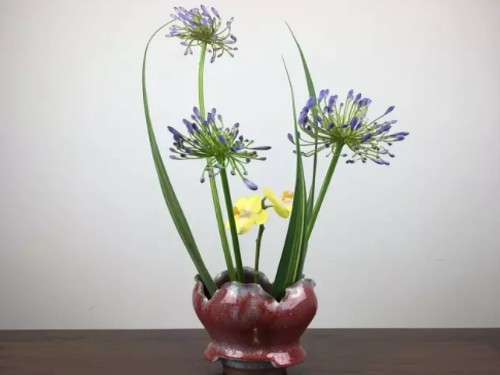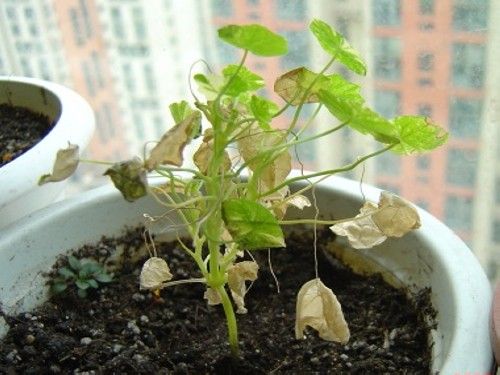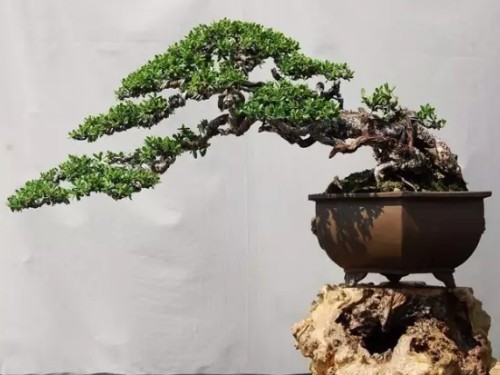Culture method of potted lotus in family
Baizi lotus is a mysterious and romantic flower of love, which has been blooming under the moisture of sunshine and rain, just like conveying the message of love. Baizi lotus is native to the Cape of good Hope in South Africa, also known as purple orchid, blue gentleman orchid, African lily, is a plant of the genus Amaryllidaceae. The umbrella-shaped inflorescence is as staggered as a funnel. A hundred lotus flowers hold an umbrella to protect themselves from the sun and rain. The lotus flower is a perennial herb of Amaryllidaceae. Flowers are white or lavender, very beautiful, when there are no flowers, foliage can also be seen, so many flower growers like potted plants to watch.

Family potted lotus culture methods:
Lighting: maintenance should be placed in a semi-shady and humid place, June-September should be careful not to let the scorching sun direct, so as not to burn the leaves.
Temperature: like warmth and have a certain degree of cold resistance. in the south, the open field can survive the winter with a little cover, while in the north, it is necessary to put it in a greenhouse of not less than 5 ℃ in winter.
Soil: 3 parts of garden soil, 1 part of rice chaff ash and 1 part of compost should be used in the cultivation of Baizi lotus.
Reproduction: Baizi lotus can be propagated by sowing and ramet. But it takes a long time for seedlings to blossom. How long is it? about five years. So flower friends should think about it when breeding hundred lotus.
Watering: watering is moist, dry and wet, especially in summer to ensure adequate moisture, and often spray water in the plant and surrounding environment to humidify and cool down. In winter, we should pay attention to control watering, keep the basin soil a little moist, not more watering.
Fertilization: one day before fertilization, watering should be suspended once to make the basin soil collect water; after fertilization, the leaves should be sprayed with clean water, and the fertilizer should be used alternately with manure, cake fertilizer and chemical compound fertilizer, once every 10-15 days. For ramet seedlings, sufficient fertilizer and water should be given to make them blossom as soon as possible. After blooming, the residual flowers should be picked and fertilized in time.
Pruning: the wild hundred-seed lotus is self-sufficient to grow very well, but the domestic hundred-seed lotus, still need to pay attention to the modeling problem. Timely cut off the weak leaves, remove the yellowing withered leaves, leaving leaves with good growth, not only beautiful shape, but also can make the flowers bloom a lot.
Diseases: there are two kinds of common diseases: leaf spot and red spot. Leaf spot disease can be controlled by spraying 1000 times of 70% methyl topiramate wettable powder. Spraying 600 times the clear water solution of chlorothalonil once when erythema occurs, the effect is very good.
Several key points of culture of Baizi lotus flower:
1. Soil: only in fertile, loose and well drained soil can it grow well.
2. Temperature: like warm and humid climate, the suitable temperature for its growth is 15-28 ℃. When the summer temperature exceeds 30 ℃, cooling measures should be taken. The pot can survive the winter safely, and the overwintering temperature is 5 ℃.
3. Moisture: like water, but do not accumulate water in the basin, otherwise the root is easy to rot. The growth slows down after flowering and enters a semi-dormant state. Watering should be strictly controlled and should be dry rather than wet.
4. Fertilization: fertilizing once every two weeks, adding phosphate fertilizer before flowering, the flowers will bloom luxuriantly and the flowers will be colorful.
Time: 2019-06-01 Click:
- Prev

The causes and Solutions of the yellowing of the leaves of Trollius paniculata
Trollius, also known as Trollius, can be cultivated perennially in southern China, while in North China it is sown in autumn and cultivated indoors in pots to make it blossom during New Year's Day and Spring Festival. The leaves are fat and beautiful, and the flowers are purple, orange, creamy yellow, etc., the golden lotus vines are twisted, the leaves are shaped like a bowl of lotus, and the milky yellow flowers are in full bloom.
- Next

Key technical points and matters needing attention in bonsai maintenance
The most important thing to raise bonsai is to have a good grasp of dry and humidity. Generally speaking, it is based on the principle of no drying and no watering. It is about once every three to four days in spring and autumn, once a day in summer, and once a week or more in winter, depending on water evaporation. It is usually better to water at eight or nine o'clock in the morning
Related
- Fuxing push coffee new agricultural production and marketing class: lack of small-scale processing plants
- Jujube rice field leisure farm deep ploughing Yilan for five years to create a space for organic food and play
- Nongyu Farm-A trial of organic papaya for brave women with advanced technology
- Four points for attention in the prevention and control of diseases and insect pests of edible fungi
- How to add nutrient solution to Edible Fungi
- Is there any good way to control edible fungus mites?
- Open Inoculation Technology of Edible Fungi
- Is there any clever way to use fertilizer for edible fungus in winter?
- What agents are used to kill the pathogens of edible fungi in the mushroom shed?
- Rapid drying of Edible Fungi

